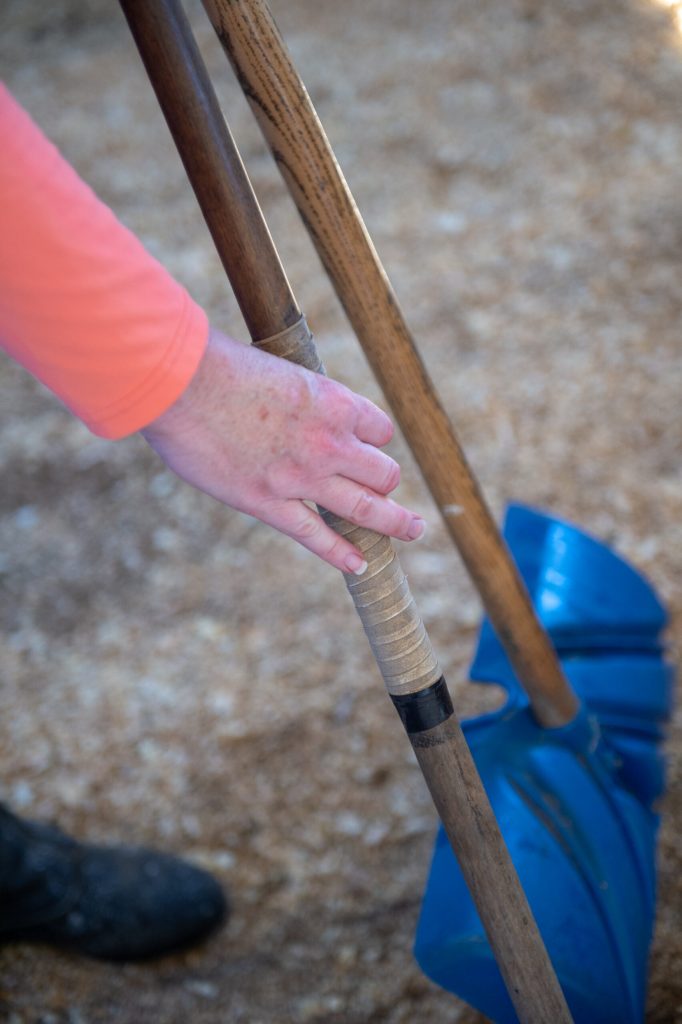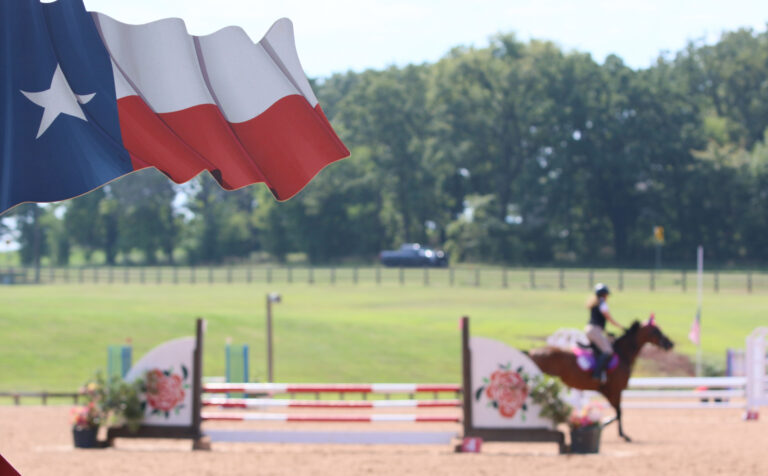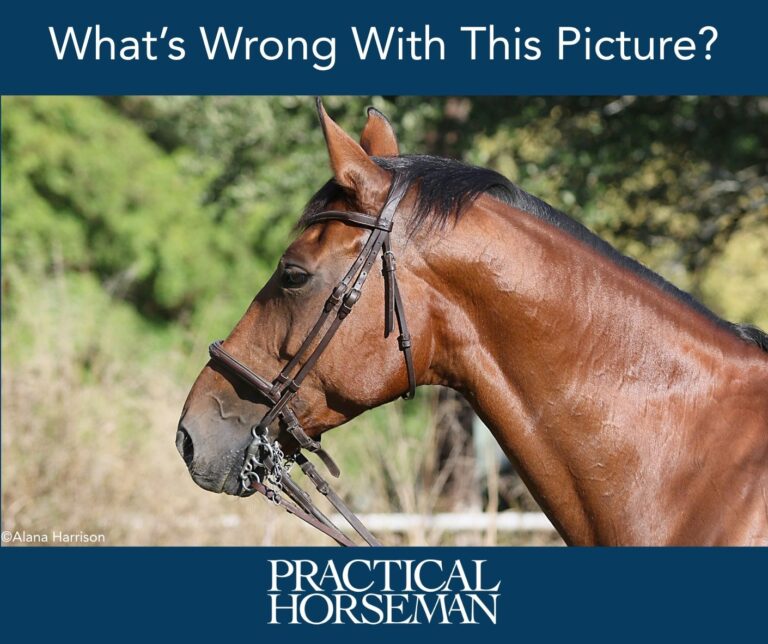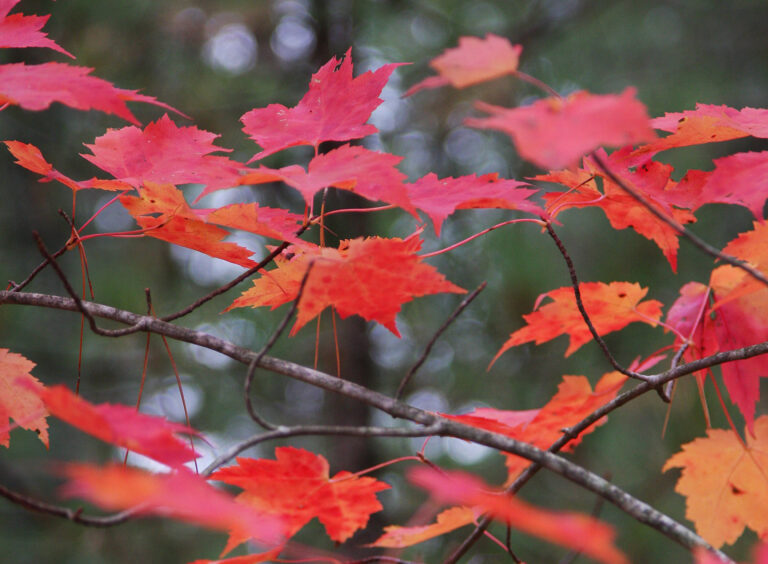Stall cleaning might seem like a straightforward process, but does your daily routine include every step necessary for ensuring your horse’s health and comfort? A good routine will:
- Provide adequate bedding. If you’re lucky enough to have a stall mattress, you only need to add bedding where your horse urinates. For mats and dirt floors, the amount of bedding necessary to keep your horse comfortable depends on the softness of the flooring. You’ll know you’re skimping too much on bedding if the hair on his hocks looks broken—a sign of the beginnings of hock sores. On the other hand, if his stall is attached to an outdoor run or “in-and-out,” and he prefers to sleep outside, you can get away with less bedding inside. Determine where he’s sleeping by observing what he’s “wearing” in the morning—for example, bedding in his mane and tail versus grass stains.
- Reduce ammonia and minimize dust. When your horse’s urine breaks down over time, it produces ammonia—that awful-smelling gas that makes your lungs ache and your eyes water. Even small amounts of ammonia can irritate your horse’s upper respiratory system, which can lead to heaves, pneumonia and other serious conditions. The best way to reduce ammonia in his stall is to clean it frequently—twice a day, if possible—using bedding that absorbs urine well, so it can be easily removed. When he is turned out for much of the day or night, peel back the bedding from the wet spots to allow the mats or floor to dry thoroughly.
Avoid any bedding that releases visible dust into the air, such as very finely ground sawdust, which, again, will irritate the lungs. Super-absorbent products, like wood pellets, can be used underneath other, cushier beddings, such as shavings. Contrary to common belief, agricultural lime (calcium carbonate, also known as daily lime or garden lime) only covers up the odor of ammonia. It doesn’t remove it from the air. “Ag lime” is also very dusty—another potential lung irritant—and gets slippery when wet. Another form of lime, hydrated lime (calcium hydroxide), is also extremely dusty and becomes caustic when wet, potentially burning skin or causing eye damage. Using it actually results in the production of more ammonia! Baking soda can cut the odor, but it turns into a messy paste when wet with urine and is expensive and impractical.
Products containing zeolites—naturally occurring volcanic minerals—are my preferred option. They effectively “eat up” ammonia. - Bank the walls. There are several benefits to piling extra bedding against the walls of your horse’s stall. First, it might help to prevent him from getting cast (getting his legs stuck against the wall while rolling). Second, it holds horses who tend to back up against the sides of the stall to poop and/or pee (in the case of mares) just far enough off to prevent them from getting the walls soiled. Third, it can save you time: Instead of adding fresh bedding every day, you can pull a little of the banked bedding off the walls and out of the corners to replace soiled bedding.
- Put safety first. The safest, most efficient way to clean your horse’s stall is when he’s not in it. When that’s not possible, no matter how mellow he is, don’t get complacent with your equipment. Never lean pitchforks, rakes, etc., against the wall where he can reach them. Always keep the handles of your wheelbarrow pointed toward the barn aisle. Yes, you can master the art of driving the wheelbarrow backward—it’s worth protecting him from the risk of getting injured in such a cramped space.
What you’ll need:

- Manure fork (traditional pitchfork for straw bedding; fine-tined fork for shavings/sawdust—whatever design that you feel conserves the most amount of bedding). To prevent blisters on your hands, wrap golf or bike-handlebar tape around the handle of your manure fork.
- Rolling muck tub or wheelbarrow: your choice—for me, it depends on how many trips I don’t want to make to the compost pile.
- Shovel: a straight-edged plastic type, like a snow shovel
- Stall freshener/ammonia odor remover
- Medium-sized bucket/container for stall freshener
- “Scoop” for freshener (a plastic bottle with the top cut off)
Here are simple steps to follow to meet these goals during your daily stall cleaning:
- First, remove all water and feed buckets from the stall. This will help to prevent dust and debris from collecting in them. Pick out all of the manure. Depending on your horse, this may require some “sifting” through the bedding.
- Carefully peel back the top layer of bedding to find the pee spots, trying not to accidentally toss the urine-soaked bedding around the stall.
- Turn the shovel over to scrape up all of the wet bedding. (With a dirt floor, try not to dig up the dirt as well.) Then flip it over to shovel the bedding into your muck bucket.
- Use your “scoop” to sprinkle the stall freshener over the urine spot. A little goes a long way, so cover the spot with just a thin layer.
- Allow the spot to dry completely. Then rake bedding over it until the stall bed is relatively even again.
- When you add fresh bedding, bank it higher against the walls. Then you can rake bedding from the edges as needed and spread it evenly across the middle of the stall.
When you finish cleaning the stall, dump the water buckets outside or down a drain, and scrub them with a stiff brush and dish soap. Rinse the buckets thoroughly before refilling them with fresh water and returning them to the stall.
If your horse has an automatic waterer, lift the lid and remove the bowl. Clean it with a brush and soap before rinsing it and returning it to the waterer to be refilled.
About Liv Guide

Liv Gude spent years in the saddle riding hunters, jumpers, reiners and, ultimately, dressage horses, before switching her focus to growing her expertise as a professional groom. She started her grooming career with Olympian Guenter Seidel. After working for him and other top riders for years, she saw the need to bring professional grooms and horse owners together in a supportive and educational manner. In 2011, she founded proequinegrooms.com, an online resource that provides information about grooming, employment and horse care. Gude believes that daily care, early detection of illness and lameness, and overall health and presentation are the first and foremost duties of a groom.
This article originally appeared in the Fall 2022 issue of Practical Horseman.








